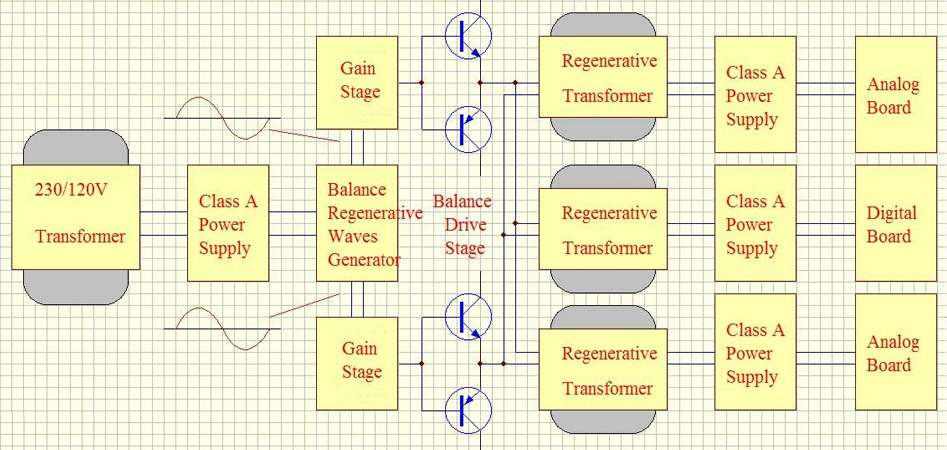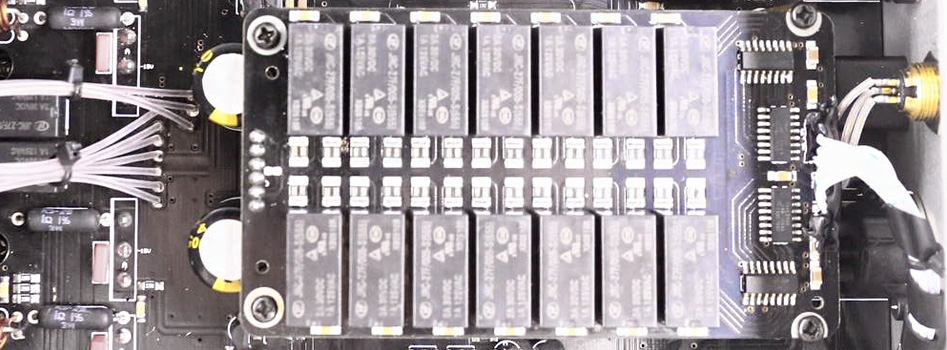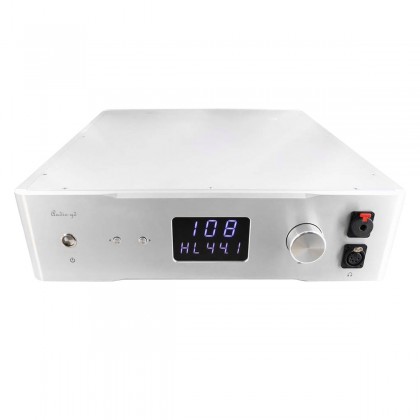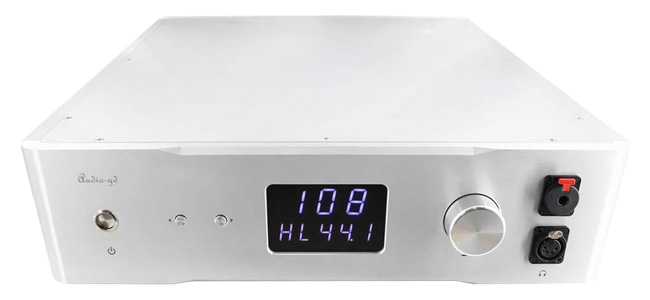A new creation from Audio-GD, the R-27HE is a balanced R2R DAC ladder with a built-in headphone amplifier and ACSS preamplifier. This improved version of the R-27 now features a regenerative power supply capable of providing an extremely clean electrical signal to the audio circuits. The entire design benefits from great attention to detail and component selection to provide the best possible sonic performance. The R-27HE also features a FIFO buffer with an optimized FPGA and a highly efficient reclocking system.
Key features :
- Four sets of discrete, independent hardware DSD decoders.
- Eight groups of discrete R2R DA modules, forming a balanced two-channel push-pull decoder.
- Dual TCXO Accusilicon clock with frequencies of 90 and 98MHz, providing perfect synchronization to the whole device.
- USB and HDMI inputs equipped with isolators and separate linear power supplies to drastically limit interference.
- Bidirectional USB transmission, providing the I2S signal to the FPGA and receiving the synchronous clock signal from it.
- ACSS non-feedback headphone amplifier capable of developing significant power to accompany all types of headphones.
- Unique regenerative power supply technology to provide extremely clean power supply to the various circuits of the device.
- Solid aluminum frame.
R2R Ladder DAC
The stage in charge of the analog/digital conversion is based on 4 integrated shielded DA-7 V2 modules. These modules directly interpret each bit of the digital signals to reconstruct the analog signal. Each module performs its task by acting on a network of resistors with a given value (R) and its double (2R), without going through an oversampling phase. This particular construction allows to decode digital signals with a quasi insensitivity to jitter while avoiding any possibility of recovering clock noises in the output signal.
Each channel is decoded separately by its own set of modules to achieve optimal crosstalk. To take this a step further, each channel of the stereo system uses its own linear power supply to minimize the amount of noise that can affect the soundstage and the stereo.
The module sets are supported by an FPGA. This one is in charge of the synchronization of the audio signals and the rejection of the jitter. It allows to offer a more precise and transparent sound restitution, while drastically reducing noise. 3 Accusilicon clocks are also integrated, allowing once again to reduce jitter to a minimum thanks to an optimal synchronization of the signals.
Jitter elimination technology
In order to eliminate the influence of jitter on the incoming signal, the R-27HE uses an asynchronous clock system. The asynchronous clocking system first reads and stores a large amount of data in RAM, while eliminating the clock from the source signal. This data is then passed to the integrated Accusilicon high-performance clocks, and all data and clock signals are then managed by the FPGA. This special design significantly reduces the final jitter level for a very natural, faithful and accurate sound reproduction.

ACSS Preamplifier & Headphone Amplifier
The R-27HE incorporates a true balanced architecture with ACSS technology for its headphone amplifier and preamp stages. These use a single, very low distortion ACSS gain stage to minimize the signal path and maintain the most neutral sound possible. This gain stage and the associated output stage operate in pure Class A. ACSS is a non-feedback technology using only discrete amplifiers within a balanced structure.

Regenerative power supply
A regenerative power supply is capable of filtering out interference on the power line to provide the purest possible power to the audio circuits. In this design, AC power is converted to DC power by the input transformer and then supplied to the regenerative waveform generator via a Class A parallel stabilized power supply. A set of regenerative waveform generators produces a 50Hz sine wave with very low distortion. After passing through a balanced gain stage, three regenerative output transformers produce a pure voltage with stable amplitude and frequency. Two sets of parallel regulated Class A power supplies finally provide independent power supply to the analog output stages and the digital audio circuits.

Volume control
Here again, the R-27HE departs from convention by using a volume control based on I/V conversion at the output of the ACSS amplifier. This non-destructive method maintains a flat frequency response and does not lose any detail. To achieve this, the Audio-GD R-27HE uses relays and resistors with a tolerance of only 0.05%, ensuring a high degree of precision in the setting and perfect channel balance.








































